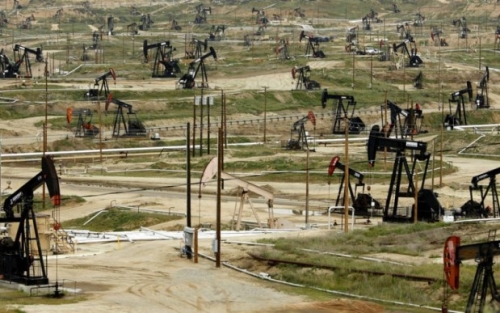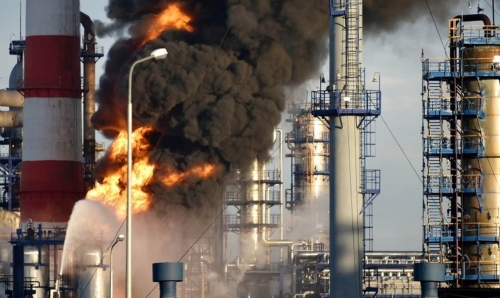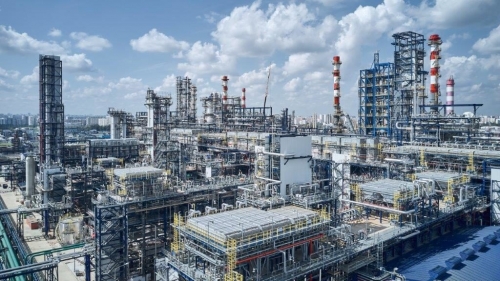Oil prices dropped to their lowest level since 2021 last week, as weakened demand and oversupply came back to the forefront with the double announcement of widespread tariffs by the US government on trade partners and OPEC+ bringing more oil back to the market.
BKR Rig Count | The total active drilling rigs in the United States decreased by 2 at 590. Oil rigs increased by 5 to 489, and gas rigs decreased by 7 to 96. Rig count in the Permian Basin decreased by 3 at 294 | Apr 4 | BKR NAM Rig Count
US Crude Inventories, excluding those in the Strategic Petroleum Reserve (SPR), increased by 6.2 MMbbl to 439.8 MMbbl (about 4% below the 5y average for this time of year). On the products side, gasoline decreased by 1.6 MMbbl (2% above the 5y average). Distillate fuels increased by 0.3 MMbbl (6% below the 5y average). Total commercial petroleum inventories increased by 5.4 MMbbl | Mar 28 | EIA Weekly Report
OPEC+ unexpectedly tripled its planned May output increase to 411,000 bpd, which some believe was meant to penalize overproducing members, particularly Kazakhstan and Iraq. Others speculate it as a deliberate effort to drive down prices, influenced by Trump's call to "cut the price of oil" and to offset losses from tighter US sanctions on Iran | Apr 3 | Bloomberg
The US Department of Energy has awarded a $1.4bn contract to Strategic Storage Partners, LLC to manage and operate the Strategic Petroleum Reserve (SPR), as of June 15, 2025. The five-year contract, with an optional five-year extension for the DoE, includes the operation and maintenance of facilities and related systems in Louisiana and Texas. The award comes as the Trump administration seeks to refill the depleted and aging emergency reserve, which currently holds 396.4 million barrels | Apr 3 | Bloomberg, US DoE
Oil traders are avoiding Chinese-built or operated vessels when booking cargoes to/from US terminals, opting for alternatives like South Korean-built tankers instead, despite Chinese vessels being chartered at lower rates. The proposed US levy on Chineseships is causing disruption, with companies excluding them from long-term charter inquiries and sales of second-hand Chinese bulk commodity ships grinding to a halt | Apr 3 | Bloomberg
China retaliated against US tariffs with a commensurate levy of 34% on all US imports starting April 10, investigations into US companies and restrictions on exports of seven types of rare earths, among others. Some economists expect the tariffs to shave about two percentage points off China’s annual economic growth. Yet the market reaction on Thursday showed investors betting that Xi will unleash enough monetary and fiscal stimulus to reach the growth target of around 5% in 2025 | Apr 4 | Bloomberg
Economists predict a US recession this year and a return to pandemic-level inflation due to Trump’s recent tariffs. Nomura Securities expects 0.6% GDP growth and 4.7% inflation, while Barclays predicts a 0.1% contraction and 3.7% inflation. Some economists foresee core PCE inflation hitting 4-5% in 2025, reversing recent progress. Federal Chair Jerome Powell said the central bank doesn’t need to hurry to adjust rates, waiting for more clarity | Apr 3 | Bloomberg
US and Guyana have signed a memorandum of understanding (MoU) to deepen security cooperation at a time regional tensions are escalating in South America. Even though the MoU was focused on tackling international crime and deter drug trafficking in the Caribbean region, US Secretary of State Marco Rubio took the chance to warn Venezuela about meddling with Guyana | Mar 28 | Upstream
bp announced it is shutting its team looking into hydrogen and LNG for transport, especially trucks, a move which does not affect its EV charging business BP Pulse. In February, the company had presented a strategy to refocus on oil and gas, slash spending on renewables, reduce its annual investment in EV charging and concentrate its EV growth in Britain, Germany, the U.S., China, India and the Iberian Peninsula | Apr 3 | Reuters
Looking ahead
Asian and Middle Eastern Crude Oil Markets Short-Term Outlook | Attempts by the US to broker a peace deal between Russia and Ukraine have brought the focus back onto Russian crude oil imports by China and India. If restrictions on Russian crude are lifted as part of the peace deal, Russian crude prices could rise due to increased demand from other regions. Consequently, the incentive for India and China to buy Russian crude would diminish, prompting them to seek more Middle Eastern crude as an alternative. This shift in demand could drive up Dubai prices, narrowing the Brent-Dubai differential. Meanwhile, US desire to exert maximum pressure on Iran has increased the uncertainty of Iranian crude imports into China, with the US sanctioning a Chinese independent refinery on March 20 for importing Iranian crude. The possibility of further sanctions on its independent refineries, which are the largest consumers of Iranian crude, could make China more cautious of future imports but is unlikely to halt the flow completely. Data from S&P shows that direct imports of Iranian barrels to China were at 192,000 b/d in February 2025. Additionally, much of the 1.122 million b/d of Iranian barrels that were destined for Southeast Asia is expected to have transited to China. Elsewhere, Asian refiners that regularly purchase light sweet crude grades from the Mediterranean market continue to prefer the Cape of Good Hope delivery route over the Red Sea passage due to safety concerns, although high logistical costs are limiting favorable arbitrage. As a result, CPC Blend crude, like other Mediterranean grades, will still need to take the much longer route around the Cape of Good Hope, which is both inefficient and costly | Mar 31 | S&P
Extra length, extra value? Adding footage one mile at a time in the Midland Basin | Extended-reach laterals (XRLs) are becoming more common across the Permian Basin, particularly in the Midland Basin. Nearly 40% of wells drilled in the Midland Basin during 2024 are categorized as XRLs (wells that are 12,000 feet or more in length). This marks a significant departure from the Delaware Basin, where less than 20% of wells exceed that length. Further, ExxonMobil has established itself as a dominant XRL driller in both basins, being the only operator to drill 3-mile-plus laterals in the Delaware Basin. In the Midland Basin, ExxonMobil is joined by Diamondback as it shifts toward XRLs. Operators are achieving XRL productivity that matches standard-length wells, with most top drillers maintaining or improving estimated ultimate recovery (EUR) per 1,000 lateral feet; ConocoPhillips emerges as the leading XRL producer in Spraberry and Wolfcamp wells, benefiting from high initial oil productivity and shallow 12-month decline rates. Diamondback also has higher-than-average peak rates in its XRLs, however, steeper decline rates hinder the operator’s overall EUR – and economics – particularly in its Spraberry wells. The financial implications of the shift to extended-reach laterals are notable, with operators like ConocoPhillips, ExxonMobil, and Ovintiv projected to achieve impressive increases in net present value (NPV) for their XRLs compared with standard-length wells. While breakeven prices are overall higher in XRLs relative to standard-length wells due to increased drilling and completion costs for the additional footage, operators such as ConocoPhillips, ExxonMobil, and Ovintiv are estimated to have staggering NPV gains ranging from 44-72% in Spraberry wells and 32-121% in Wolfcamp wells, underscoring the lucrative potential of longer lateral drilling despite the higher breakeven costs | Mar 31 | S&P

%20(1).png)



